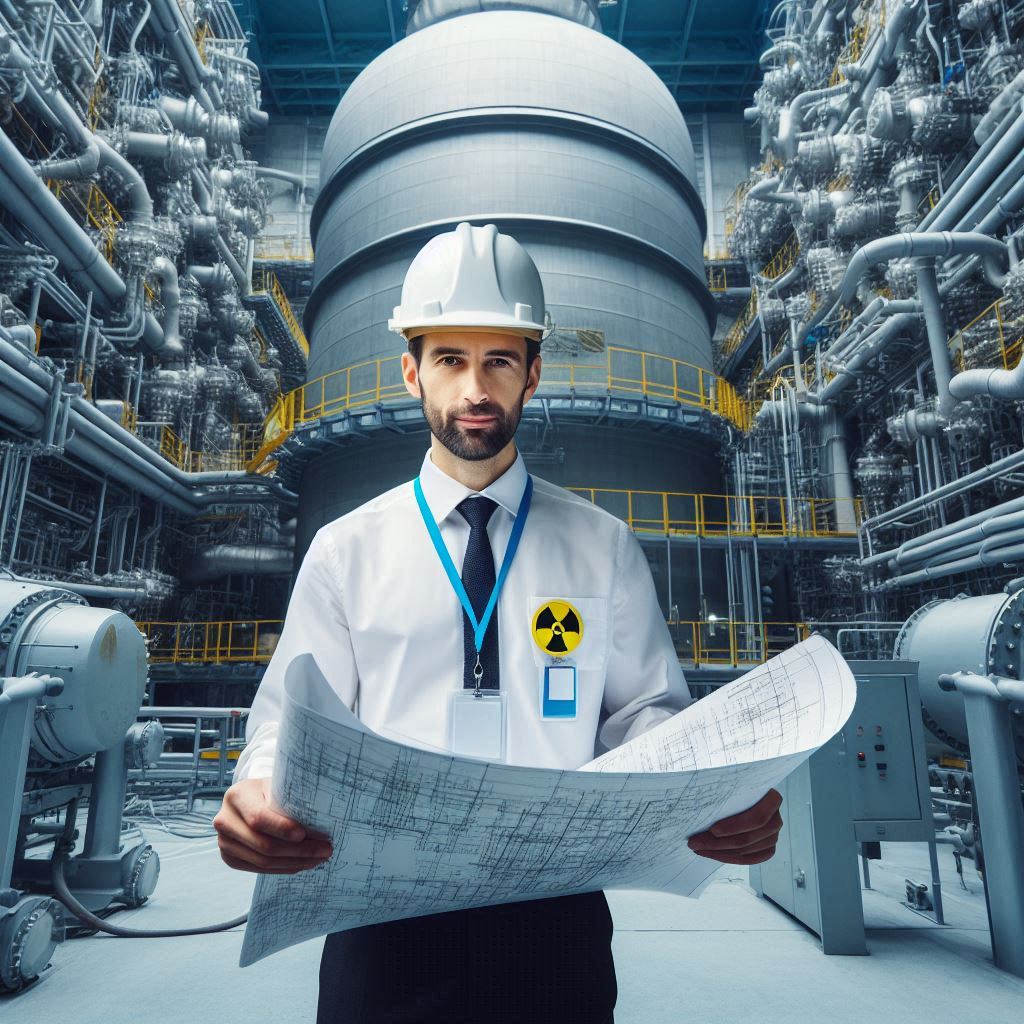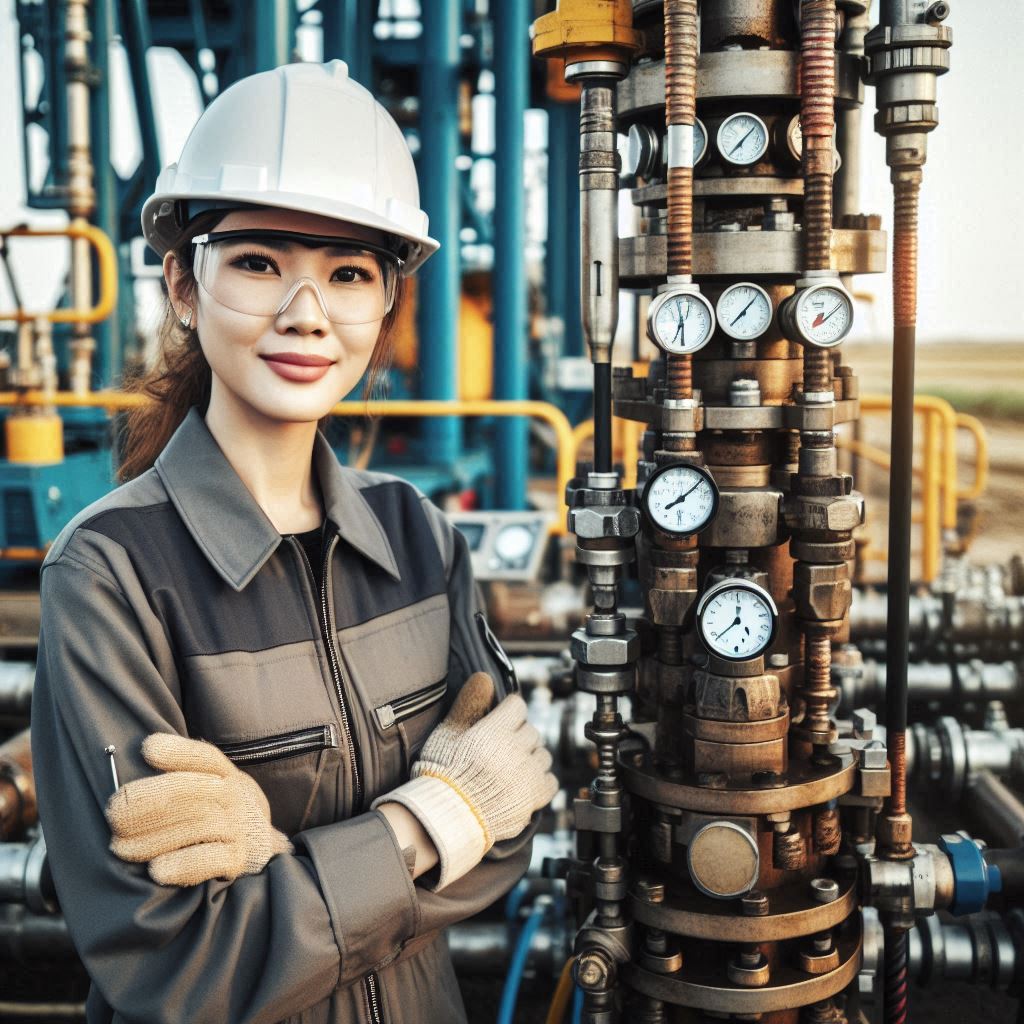Introduction
Overview of the Importance of Nuclear Waste Management
Nuclear waste management is essential for protecting human health and the environment from the hazards of radioactive materials.
As nuclear energy remains a significant part of our energy mix, managing the byproducts of this power source becomes increasingly important.
Effective waste management ensures the safe disposal and containment of radioactive waste, preventing potential contamination and long-term environmental harm.
Proper management practices also help maintain public confidence in nuclear energy by demonstrating a commitment to safety and sustainability.
The Current Challenges in Nuclear Waste Disposal
Despite its importance, nuclear waste disposal presents several challenges.
High-level radioactive waste remains dangerous for thousands of years, necessitating long-term storage solutions.
Geological repositories, while a common approach, face issues such as site selection difficulties, environmental impact concerns, and public opposition.
Additionally, managing spent fuel and other byproducts requires complex and costly technologies.
These challenges highlight the need for ongoing research and innovation to develop more effective, sustainable solutions for nuclear waste management, ensuring both safety and environmental protection.
Types of Nuclear Waste
Explanation of the Different Types of Nuclear Waste
Nuclear waste falls into three categories: high-level, intermediate-level, and low-level.
Each category has unique characteristics and requires specific handling methods.
- High-Level Waste (HLW): is the most radioactive. It includes spent nuclear fuel and reprocessing waste. HLW generates a significant amount of heat and remains hazardous for thousands of years. It demands long-term storage solutions, such as deep geological repositories.
- Intermediate-Level Waste (ILW): has lower radioactivity but still needs careful management. It comprises reactor components, chemical sludge, and contaminated materials. ILW generates less heat and remains hazardous for hundreds of years. This type often undergoes treatment and is stored in surface facilities.
- Low-Level Waste (LLW): is the least radioactive. It includes items like clothing, tools, and medical materials. LLW has lower levels of radioactivity and poses a smaller immediate risk. It remains hazardous for a shorter duration, typically decades to a few centuries.
Statistics on the Amount of Each Type of Waste Produced Annually
- High-Level Waste (HLW): The U.S. produces approximately 2,200 metric tons of HLW each year. Globally, the annual production of HLW is around 12,000 metric tons.
- Intermediate-Level Waste (ILW): The U.S. generates about 5,000 metric tons of ILW annually. Worldwide, the production of ILW is around 15,000 metric tons each year.
- Low-Level Waste (LLW): The U.S. produces about 40,000 metric tons of LLW per year. Globally, the total annual production of LLW is approximately 100,000 metric tons.
Each type of nuclear waste requires specific management strategies to ensure safety and minimize environmental impact.
Effective waste management practices are crucial for protecting human health and the environment.
Read: The Role of Aerospace Engineers in Satellite Development
Current Methods of Nuclear Waste Disposal
Traditional Methods of Nuclear Waste Disposal
- Storage: Temporary storage involves placing nuclear waste in secure containers at surface facilities. These facilities keep waste isolated until a long-term solution is available. Storage methods include dry cask storage and spent fuel pools. Dry casks are robust containers used for on-site storage, while spent fuel pools provide interim cooling and shielding.
- Reprocessing: Reprocessing involves chemically treating spent nuclear fuel to separate usable materials, such as uranium and plutonium. This process reduces the volume of high-level waste by extracting valuable components. The remaining waste is less hazardous and requires less storage space.
- Deep Geological Disposal: Deep geological disposal involves burying nuclear waste in stable geological formations, such as salt, clay, or granite. This method aims to isolate waste from the environment and human contact for thousands of years. Geological repositories are designed to contain and isolate waste over long time periods.
Drawbacks and Limitations of Each Method
- Storage: While storage is a common practice, it is only a temporary solution. It does not address the long-term risks associated with high-level waste. Issues include the potential for leaks, accidents, and the need for continuous monitoring. Long-term storage also requires secure, long-lasting facilities.
- Reprocessing: Although reprocessing reduces waste volume, it has several drawbacks. The process is expensive and generates secondary waste that still needs disposal. Reprocessing also carries the risk of nuclear proliferation, as it separates plutonium, which can be used in nuclear weapons. Additionally, reprocessing plants have a limited lifespan.
- Deep Geological Disposal: Deep geological disposal is a promising long-term solution, but it faces challenges. Selecting suitable geological sites is complex and costly. There are concerns about potential leaks or contamination over thousands of years. The construction and maintenance of geological repositories are expensive and require extensive research and monitoring.
Each method of nuclear waste disposal has its own set of benefits and limitations.
The choice of method depends on factors such as waste type, volume, and long-term safety considerations.
Ongoing research aims to improve existing methods and develop new solutions for managing nuclear waste more effectively.
Read: Aerospace Engineering in Commercial Spaceflight
Innovative Technologies in Nuclear Waste Management
Introduction of Advanced Technologies
Advanced Reprocessing Techniques
New reprocessing methods aim to enhance efficiency and reduce the volume of nuclear waste.
Innovations include improved chemical processes that separate radioactive isotopes more effectively.
Advanced reprocessing technologies also focus on minimizing secondary waste and reducing costs.
These methods are designed to better handle spent nuclear fuel and recover valuable materials with higher precision.
Partitioning and Transmutation Processes
Partitioning involves separating radioactive isotopes from nuclear waste to isolate those with the longest half-lives.
Transmutation then converts these isotopes into less harmful or shorter-lived isotopes using nuclear reactions.
This technology aims to transform highly radioactive elements into less hazardous ones, reducing long-term environmental risks.
These processes have the potential to significantly lower the radiotoxicity and heat generation of nuclear waste.
Advanced Storage Solutions
Innovations in storage include the development of more durable and secure containment systems.
For instance, researchers are exploring advanced materials for storage containers that offer enhanced protection against leaks and radiation.
Additionally, new methods such as deep borehole disposal are being investigated.
This approach involves drilling deep into the Earth’s crust to securely store nuclear waste, potentially offering a more stable and isolated environment compared to traditional geological repositories.
How These Technologies Improve Efficiency and Safety
Advanced Reprocessing Techniques
By improving the efficiency of material separation and reducing waste volume, advanced reprocessing can make waste management more cost-effective.
Enhanced separation processes also minimize the environmental impact by producing less secondary waste.
These technologies contribute to safer long-term storage and better utilization of nuclear materials.
Partitioning and Transmutation Processes
Partitioning and transmutation aim to address the longevity and radiotoxicity of nuclear waste.
By converting long-lived isotopes into shorter-lived ones, these processes reduce the time that waste remains hazardous.
This approach improves safety by lowering the long-term environmental and health risks associated with nuclear waste disposal.
Advanced Storage Solutions
Innovative storage solutions enhance safety through improved containment and isolation.
New materials and design techniques increase the durability of storage containers, reducing the risk of leaks and radiation exposure.
Advanced storage methods, such as deep borehole disposal, offer more secure and stable environments, minimizing the potential for future contamination and ensuring long-term safety.
These cutting-edge technologies represent significant advancements in nuclear waste management.
They aim to improve efficiency, reduce environmental impact, and enhance the safety of waste disposal methods.
As research and development continue, these innovations hold promise for more effective and sustainable management of nuclear waste.
Read: Exploring Subfields of Aerospace Engineering

Benefits of Innovations in Nuclear Waste Management
Discussion on the Potential Benefits of These Innovations
Reduced Environmental Impact
Innovations in nuclear waste management significantly lower environmental risks.
Advanced reprocessing techniques reduce high-level waste volume by extracting valuable materials, decreasing the amount needing long-term storage.
Partitioning and transmutation convert long-lived radioactive isotopes into shorter-lived ones, minimizing long-term hazards.
Improved storage solutions, such as advanced materials and deep borehole disposal, enhance containment and reduce contamination risks.
Overall, these innovations help limit the environmental footprint of nuclear waste.
Decreased Storage Costs
New technologies lead to substantial cost savings in waste management.
Advanced reprocessing and partitioning reduce the volume of waste, lowering the expenses of building and maintaining storage facilities.
More durable storage solutions, like advanced materials and deep borehole disposal, decrease long-term costs by enhancing reliability and longevity.
Reduced storage volumes and maintenance needs translate into cost-effective management.
Improved Long-Term Safety Measures
Innovations enhance safety by improving containment and reducing waste radiotoxicity.
Advanced reprocessing techniques lower waste heat and radioactivity, making it safer to handle and store.
Partitioning and transmutation address long-term risks associated with highly radioactive isotopes, ensuring waste remains less hazardous over time.
New storage technologies offer better protection against leaks and radiation exposure, contributing to a safer environment and safeguarding public health.
Examples of Successful Pilot Programs and Projects Implementing These Innovative Technologies
Advanced Reprocessing Techniques
The EU’s Advanced Reprocessing Technology project aims to develop efficient methods for separating and recycling nuclear materials.
This project has shown promising results in reducing waste volumes and improving nuclear fuel cycle sustainability.
Partitioning and Transmutation
The U.S. Department of Energy’s Advanced Fuel Cycle Initiative has explored partitioning and transmutation technologies.
Successful pilot programs have demonstrated the feasibility of reducing long-term waste radiotoxicity and heat generation.
Advanced Storage Solutions
Sweden’s Forsmark deep geological repository represents a successful example of advanced storage solutions.
The repository design incorporates state-of-the-art materials and engineering to ensure long-term safety and stability.
These innovative technologies offer significant benefits in managing nuclear waste.
By reducing environmental impact, decreasing costs, and enhancing safety, they contribute to more sustainable and effective waste management practices.
Continued research and successful implementation of these technologies promise further improvements in handling nuclear waste.
Transform Your Career Today
Unlock a personalized career strategy that drives real results. Get tailored advice and a roadmap designed just for you.
Start NowRead: The Impact of Aerospace Engineering on Modern Life
Challenges and Obstacles
Identification of the Challenges and Obstacles Facing the Implementation of These Innovative Technologies
- Regulatory Hurdles: Implementing innovative nuclear waste management technologies faces stringent regulatory requirements. Complex and varying regulations across regions can delay approvals. The lengthy approval process can hinder the deployment of new methods. Navigating these regulations requires significant time and resources.
- Public Perception: Public concerns about safety and environmental impact can obstruct the adoption of new technologies. Communities may be wary of advanced methods, especially those involving long-term storage or reprocessing. Negative perceptions can lead to resistance and delays in implementation.
- Cost Considerations: Many innovative technologies involve substantial upfront costs, including research, development, and infrastructure. Advanced reprocessing and storage solutions require significant investment. Long-term maintenance and monitoring further add to the costs, making it challenging to justify initial expenditures.
Analysis of Potential Solutions to Overcome These Obstacles
- Regulatory Hurdles: Streamlining regulatory processes and harmonizing standards across countries can expedite technology adoption. Engaging with regulatory bodies early and providing comprehensive safety assessments can help navigate complex regulations. Simplifying approval procedures can reduce delays and facilitate the deployment of new technologies.
- Public Perception: Transparent communication and public education are crucial for overcoming resistance. Clear information about safety measures, benefits, and rigorous testing can build public trust. Involving communities in the decision-making process and addressing concerns proactively can foster acceptance and support.
- Cost Considerations: To address high costs, securing government funding and forming public-private partnerships can provide essential financial support. Emphasizing long-term economic benefits and cost savings can justify initial investments. Collaborative international efforts can share costs and resources, making advanced technologies more feasible.
By addressing these challenges and implementing solutions, the adoption of innovative nuclear waste management technologies can progress more effectively.
Streamlining regulatory processes, enhancing public engagement, and managing costs will help overcome obstacles and ensure successful implementation.
Read: Biomedical Engineering: Impact on Public Health
International Collaboration in Nuclear Waste Management
Overview of International Efforts and Collaborations
Addressing nuclear waste management is a global challenge that necessitates international collaboration.
Countries around the world face similar issues with managing and disposing of nuclear waste, leading to various joint efforts and initiatives.
International organizations, such as the International Atomic Energy Agency (IAEA), play a crucial role in facilitating cooperation and sharing best practices.
These organizations provide a platform for countries to collaborate on research, develop common standards, and implement effective waste management strategies.
Countries also engage in bilateral and multilateral agreements to tackle nuclear waste challenges.
Collaborative efforts include joint research projects, shared technology development, and cross-border storage solutions.
By pooling resources and expertise, nations can address technical and logistical challenges more effectively and develop innovative solutions for waste management.
Highlight of Successful Joint Projects and Initiatives
- The International Spent Fuel Storage Facility (ISFSI): Located in Sweden, the ISFSI is a notable example of international collaboration in spent fuel storage. It serves as a model for best practices in secure storage and has been supported by various international partners. The facility emphasizes high safety standards and advanced technology for long-term storage.
- The European Union’s Horizon 2020 Program: This research and innovation program funds projects related to nuclear waste management. The program supports collaborative research on advanced reprocessing technologies, partitioning, and transmutation. It encourages partnerships between European countries to develop more efficient and safer waste management solutions.
- The International Radioactive Waste Management Alliance (IRWMA): The IRWMA is a collaborative effort involving multiple countries to advance research and technology in radioactive waste management. The alliance focuses on improving safety, reducing costs, and enhancing the efficiency of waste management practices. It fosters cooperation between member countries to address shared challenges and develop innovative solutions.
- The Deep Geological Repository Projects: Several countries, including Finland and Canada, have undertaken deep geological repository projects to safely store high-level nuclear waste. Finland’s Olkiluoto repository and Canada’s Deep Geological Repository project are examples of successful international collaborations. These projects involve extensive research, technological development, and joint efforts to ensure long-term safety and stability.
International collaboration in nuclear waste management helps address common challenges and advance technological solutions.
By sharing expertise, resources, and best practices, countries can develop more effective and sustainable waste management strategies.
Successful joint projects and initiatives demonstrate the value of cooperative efforts in tackling the global issue of nuclear waste disposal.
Future Perspectives and Trends
Prediction of Future Trends in Nuclear Waste Management and Potential Advancements in Technology
- Increased Adoption of Advanced Reprocessing: Future trends in nuclear waste management are likely to include broader adoption of advanced reprocessing technologies. These methods will become more efficient at separating valuable materials and reducing waste volume. Innovations in chemical processing and material recovery will play a key role in improving the sustainability of nuclear fuel cycles.
- Development of New Storage Solutions: Advancements in storage technologies are expected to focus on developing more durable and secure containment methods. Innovations such as advanced materials for storage containers and deep borehole disposal could become more prevalent. These technologies aim to enhance long-term safety and reduce the environmental impact of nuclear waste.
- Enhanced Partitioning and Transmutation: The field of partitioning and transmutation will likely see significant progress. Research will continue to develop more effective methods for converting long-lived isotopes into shorter-lived ones. These advancements will help reduce the long-term radiotoxicity and heat generation of nuclear waste, making it safer and easier to manage.
- Increased International Collaboration: The future of nuclear waste management will benefit from enhanced international collaboration. Countries will continue to share research, technology, and best practices to address common challenges. Collaborative efforts will drive innovation and improve the efficiency of waste management solutions on a global scale.
Discussion on How Regulatory Frameworks and Public Perception May Influence the Future of Nuclear Waste Disposal
- Regulatory Frameworks: Future advancements in nuclear waste management will be significantly influenced by regulatory frameworks. As new technologies emerge, regulatory bodies will need to adapt and update standards to ensure safety and efficacy. Harmonizing regulations across countries can facilitate faster adoption of innovative methods. However, stringent regulations may also slow down the deployment of new technologies if they are not flexible or responsive to advancements.
- Public Perception: Public perception will play a crucial role in shaping the future of nuclear waste management. As new technologies are developed, it will be important to address public concerns and build trust through transparent communication. Engaging communities in decision-making processes and demonstrating the safety and benefits of new technologies will be essential for gaining acceptance. Positive public perception can accelerate the implementation of advanced solutions, while resistance or skepticism may create obstacles.
The future of nuclear waste management will be marked by technological advancements and evolving regulatory and public landscapes.
Continued innovation, coupled with adaptive regulatory frameworks and proactive public engagement, will be key to developing effective and sustainable waste management solutions.
Conclusion
Summary of Key Points Discussed in the Blog Post
This blog highlighted significant innovations in nuclear waste management, focusing on advanced containment systems, reprocessing techniques, and new material developments.
We discussed how these technologies aim to enhance safety, minimize environmental impact, and improve the efficiency of waste disposal processes.
Each advancement addresses critical issues in managing nuclear waste, from reducing long-term storage risks to improving recycling methods.
Envision a Future Where Innovative Technologies Revolutionize Nuclear Waste Management
Looking ahead, we envision a future where these innovative technologies revolutionize nuclear waste management.
Emerging solutions could lead to more sustainable and efficient waste disposal methods.
Advances in material science and engineering might enable safer, more effective containment and recycling of nuclear waste.
This progress will not only improve environmental safety but also support the continued use of nuclear energy as a clean energy source.
With ongoing research and development, we anticipate a transformative shift in how we handle nuclear waste, benefiting both the industry and the planet.
[E-Books for Sale]
The Big Book of 500 High-Paying Jobs in America: Unlock Your Earning Potential
$19.99 • 500 High-Paying Jobs • 330 pages
Explore 500 high-paying jobs in America and learn how to boost your career, earn more, and achieve success!
See All 500 High-Paying Jobs of this E-Book
1001 Professions Without a Degree: High-Paying American Jobs You Can Start Now
$19.99 • 1001 Professions Without a Degree • 174 pages
Discover 1001 high-paying jobs without a degree! Unlock career tips, skills, and success strategies for just $19.99!




